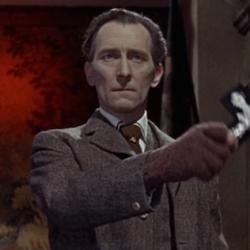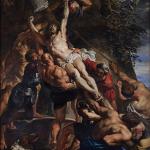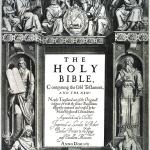Timothy Beal (Religion and Its Monsters) analyzes Fritz Lang’s film Metropolis (1926) as a tale of two monsters.
First is “unhindered industry . . . as a cult of human sacrifice to the industrial machine.” The city’s “power house” is a “giant, steam-spewing industrial machine . . . with a large stairway in the center” (152). When Freder, son of Jon Frederson, the Master of Metropolis, sees it, he cowers in front of it. As he watches, “a worker in one of the niches fails to open a pressure valve, and there is an explosion, causing many to fall from the face of the machine to their deaths. As other men blankly march over to remove the bodies, the camera reverses to face Freder, who cries out in horror, ‘MOLOCH!’ The next shot reverses to Freder’s point of view again, in which the machine has been transformed into the gaping face of a monster god of human sacrifice. . . . Ascending the tongue-like staircase are men, costumed in 1920s generic ‘savage’ wear (skirts, no shirts), forcing bound victims into its fiery gullet. Following them are rows of workers in uniform, hunched over, marching at a slow, even pace into the mouth of this insatiable monster god” (153).
The other monster is a robotic woman, Maria, “projected as a figure of Dionysus, an ecstatic embodiment of dread and desire, death and eros. 19 Like Dionysus, the robotic Maria incites her mesmerized devotees to ecstatic revelry and violence that transgresses social norms and is ultimately self-destructive. Incited by her entrancing sermon, the women and men rise up en masse and destroy the central power house machine. As they dance before its smoking ruins, the flood waters rise in the underground worker’s city to destroy their children. Returning to the Metropolis above ground, the robotic Maria continues inciting her bacchic revelry among the elite, who dance around her bearing lanterns on sticks that are reminiscent of the Dionysian thyrsi, the ivy spears that were carried by the Bacchic maenads during their ecstatic ritual dances” (155). Eventually both monsters are destroyed in the very flames they stoke up.
Beal observes that “the film’s monster of revolution, like its monster of industry, is created by the master of capital, not by the masses of labor. The audacious suggestion here is that even the threat of revolution comes from the mind of capital, not labor. lndeed, the suggestion is that revolution poses no real threat to capital but only to the workers themselves” (156).














